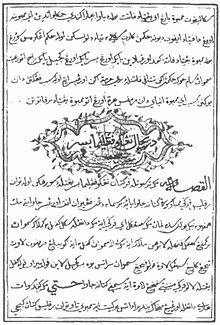Evolution of Jawi Script
Source : https://youtu.be/VgpOOCGsuO0
The earliest known inscriptions in Malay were found in southern Sumatra and on the Bangka Island (683-6 AD). They were written in an Indian script during the time of the kingdom of Srivijaya. When Islam arrived in Southeast Asia during the 14th century, the Arabic script was adapted to write the Malay language. In the 17th century, under influence from the Dutch and British, the Arabic script was replaced by the Latin alphabet.
Jawi is an Arabic alphabet for writing the Malay language, Acehnese, Banjarese, Minangkabau and several other languages in Southeast Asia. Until today, Jawi is one of the two important and official scripts in Brunei Darussalam, and is used as an alternative script in Malaysia. In Malaysia, Jawi was once the standard script for the Malay language but the implementation of the National Language Acts 1963 forced Jawi to be replaced by Latin scripting called Rumi. Eventually, Jawi has since been relegated to a script used for religious, cultural and some administrative purposes. It can be typed with the Jawi keyboard. Day-to-day usage of Jawi is retained in more conservative Malay-populated areas such as Kelantan in Malaysia and Pattani in Thailand.
Today, the script is used for religious and Malay cultural administration in Terengganu, Kelantan, Kedah, Perlis and Johor. Various efforts are in place to revive the Jawi script in Malaysia and Brunei due to its important role in the Malay and Islamic spheres as it is one of the Malays’ pride. Jawi scripts are also seen at the rear of Malaysian ringgit and Brunei dollar banknotes. The Malays in Pattani still use Jawi today for the same reasons. Nonetheless, the Jawi script also does enjoy a regional status in Malay dominated areas in Indonesia such as Riau, Acheh, or Kalimantan although Indonesia has multiple regional and native languages. This is partially due to the fact that regional and native languages are compulsory studies in the basic education curriculum of each region. Jawi script is widely used in Riau and Riau Island province, where road signs and government buildings signs are written in this script. It is still widely used in traditional religious school across Java, however, in the form of Pegon script, a variant of it, and is not used in common writing when the Latin alphabet and in some cases the Javanese script.

Hikayat Abdullah in Jawi
Batu Bersurat Terengganu (1303), is the oldest Jawi-written artifact found
an article from the Utusan Melayu newspaper


Hi. I found your blog very useful. Even though there were only a few articles, I think they were thoughtfully written and presented. Do you still conduct any research in the area of Jawi and the early Malay writing system?
ReplyDelete